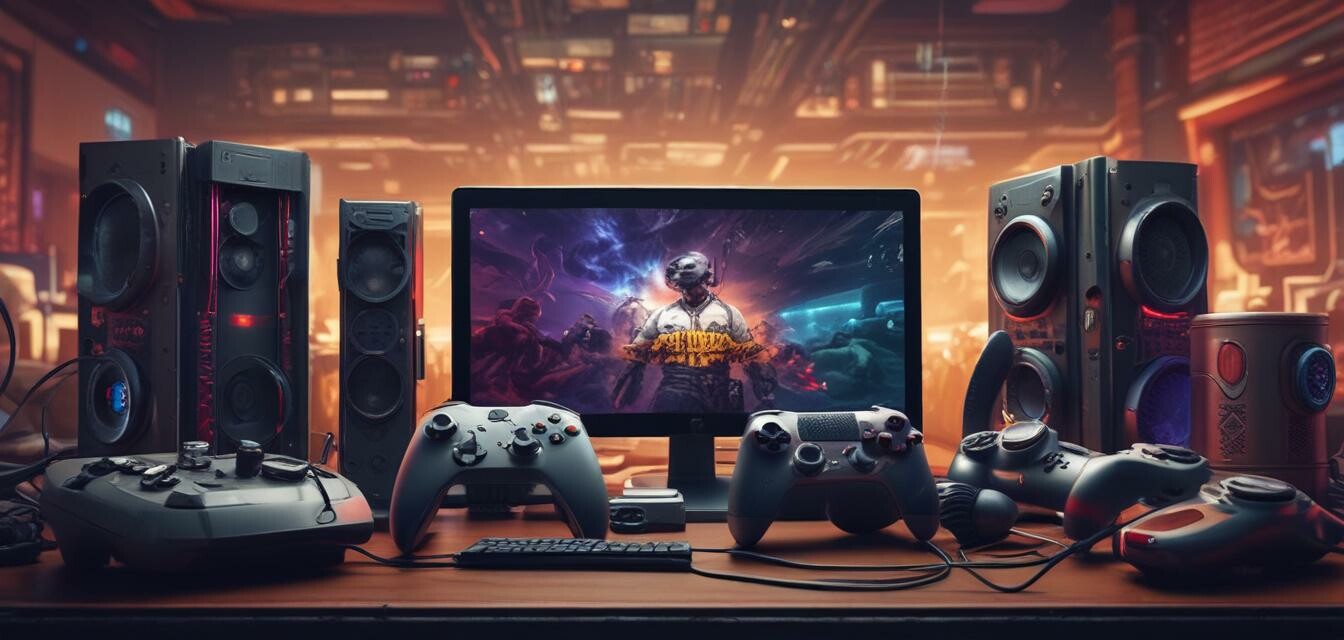
Key challenges facing the gaming accessory market
Key Takeaways
- Manufacturers face supply chain disruptions and increasing costs.
- Consumer preferences are shifting towards innovative and user-friendly designs.
- Sustainability concerns are urging companies to rethink materials and processes.
- Technology advancements are creating both opportunities and challenges.
The gaming accessory market has seen tremendous growth in recent years, fueled by the increasing popularity of video games globally. However, as this market expands, numerous challenges have surfaced for manufacturers. In this article, we will delve into the emerging challenges facing the gaming accessory industry and explore how companies are addressing these issues to remain competitive.
1. Supply chain disruptions
Recent global events have emphasized the fragility of supply chains, affecting many industries, including gaming accessories. Manufacturers are grappling with delays and shortages of key components. Here are the primary causes of supply chain disruptions:
- Raw material shortages
- Logistical challenges
- Geopolitical tensions
- Rising shipping costs
Strategies to address supply chain issues
To combat these challenges, companies are exploring various strategies:
- Diversifying suppliers to minimize dependency on a single source.
- Investing in local manufacturing where feasible.
- Implementing advanced data analytics for better demand forecasting.
2. Rising production costs
Increasing costs related to materials, labor, and logistics have put pressure on profit margins for gaming accessory manufacturers. Here’s a breakdown of factors contributing to rising production costs:
| Factor | Impact |
|---|---|
| Raw materials | Price increases due to scarcity or demand surges. |
| Labor | Higher wage expectations and labor shortages. |
| Transportation | Increased shipping rates and delays affecting delivery times. |
Mitigating production costs
Manufacturers are exploring several methods to mitigate rising costs:
- Leveraging automation and technology to enhance efficiency.
- Negotiating long-term contracts with suppliers to stabilize prices.
- Adopting value engineering approaches to optimize product designs.
3. Shifting consumer preferences
The demand for innovative and user-friendly designs is growing rapidly, as consumers seek products that enhance their gaming experience. Here are some trends shaping consumer preferences:
- Personalization of gaming accessories.
- Wireless technology and convenience.
- Ergonomics and comfort.
- Integration of RGB lighting and cool aesthetics.
Adapting to consumer trends
To meet these changing preferences, manufacturers are:
- Investing in R&D to innovate product offerings.
- Incorporating customer feedback into product development.
- Offering customization options for individual preferences.
4. Sustainability and environmental concerns
With growing awareness about environmental issues, there’s increasing pressure on manufacturers to adopt sustainable practices. Consumers now favor products with an eco-friendly angle. Key areas of focus include:
- Reduce plastic usage in packaging and products.
- Utilize sustainable materials for manufacturing.
- Implement recycling programs for old gadgets.
How companies are going green
Manufacturers are responding to sustainability challenges by:
- Partnering with eco-conscious suppliers.
- Producing limited-edition lines using recycled materials.
- Highlighting sustainability in marketing to reach environmentally-conscious consumers.
5. Technological advancements
Technological development in gaming accessories is both an opportunity and a challenge. The rapid pace of innovation can be hard to keep up with. Here are some technological trends impacting the market:
- Development of immersive VR and AR accessories.
- Growth of cloud gaming and its demands for high-performance gear.
- Integration with smart home devices and IoT.
Staying ahead of technology
To cope with technological advancements, companies are:
- Attending industry expos and events to spot trends early.
- Collaborating with tech firms for innovative solutions.
- Investing in employee training for emerging technologies.
Conclusion
The gaming accessory market is poised for significant growth, but it also faces a myriad of challenges. Manufacturers must adapt to supply chain disruptions, rising costs, shifting consumer preferences, sustainability pressures, and technological advancements. By implementing innovative strategies and prioritizing consumer needs, companies can navigate these challenges effectively and thrive in a competitive marketplace.
Pros
- Growing market demand for innovative gaming accessories.
- Expanding consumer base due to increasing gaming popularity.
- Opportunity to leverage technology for product improvement.
Cons
- Supply chain and production challenges.
- Cost pressures affecting profitability.
- Need for constant adaptation to market changes.
For more information on the latest trends in gaming accessories, check out our trends and innovations section.
Also, for insights into essential gaming upgrades, visit our performance enhancers page.